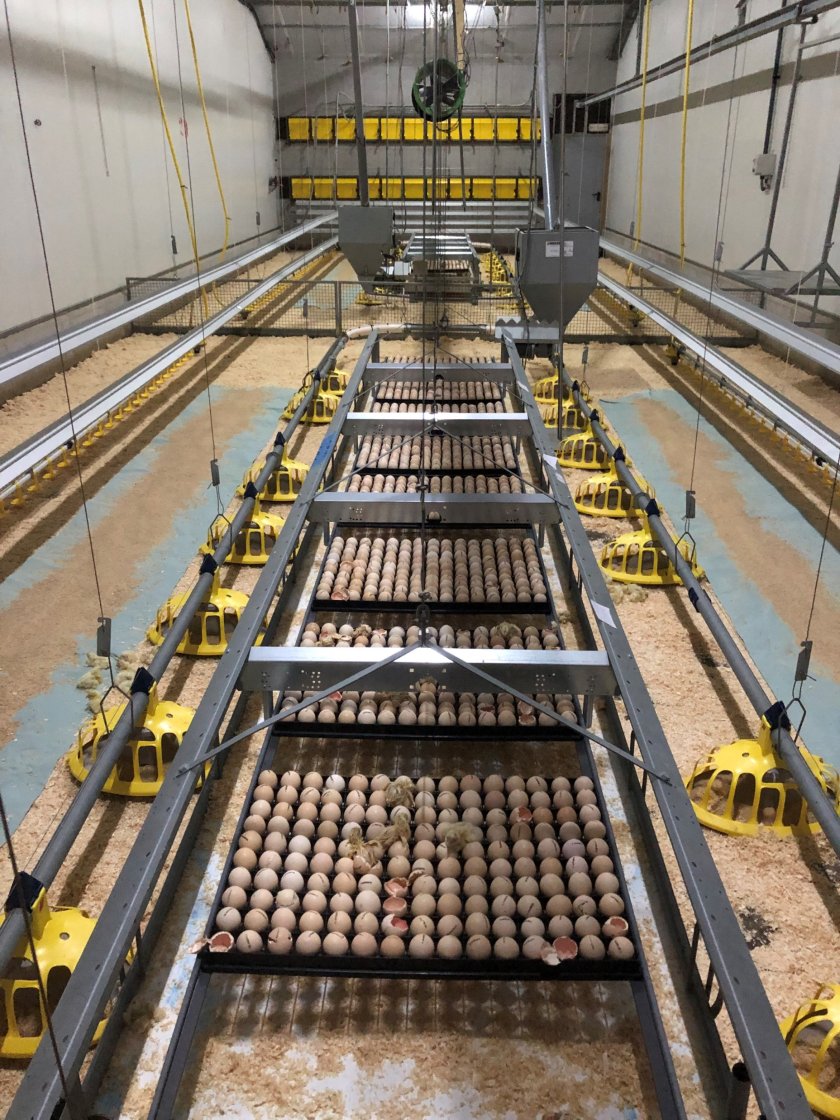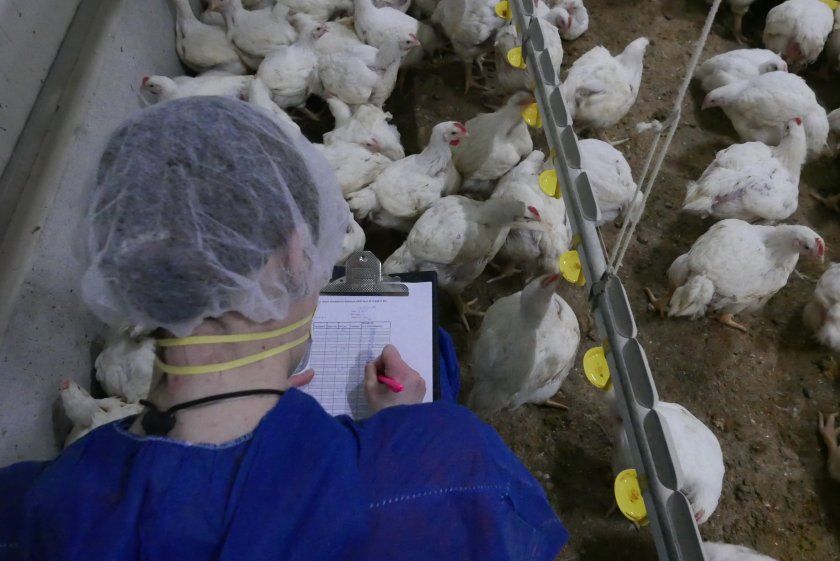Healthy Livestock approach: Effect of peri-hatching environment on later life broiler performance and welfare
WIAS Magazine - Summer edition 2022
Research Overview
Most broiler chickens used for meat production hatch within conventional hatching systems (or so called hatchery-hatched systems) and can be delayed in feed and water provision up to 48 hours because of hatch time differences, processing procedures, and transportation to the rearing farm (1). Moreover, these broiler chickens hatch in darkness and are exposed to substantial noise and dust levels in the incubator (2). All these aspects in the peri-hatching environment of broiler chickens may negatively affect later life performance, health and welfare. In the last decade, alternative hatching systems have been developed providing feed and water immediately after hatch and reducing early life stressors. There are currently two different types of alternative hatching systems available: hatchery-fed systems, where chickens hatch at the hatchery and are provided with feed and water but still need to be transported to the rearing farm, or on-farm-hatching systems, where fertile eggs at day 18 of incubation are transported to and hatched at the rearing farm (see an example of this system in Picture 1).

Picture 1: On-farm hatching system containing trays with hatching eggs (Source: Experimental Poultry Centre, Geel, Belgium)
Healthy Livestock approach
To assess effects of hatching systems on later life performance, health and welfare, we performed a study as part of the Healthy Livestock project. This European/Chinese project aims to reduce the need for antimicrobials in poultry and pigs by enhancing animal welfare and resilience. Alternative hatching systems may contribute to this approach. In our first study, we used broiler chickens of a young parent flock as they are smaller in size and have a less matured thermoregulatory system at hatch compared to chickens from a prime or old breeder flock and may therefore benefit more from alternative hatching systems. During our study, we assessed, in 3 consecutive batches, the effect of 3 hatching systems (hatchery-hatched, hatchery-fed or on-farm hatching) on later life welfare and performance of broiler chickens. This study was performed under semi-commercial conditions at a research facility of the Experimental Poultry Centre in Geel, Belgium. Measurements performed were day-old chick quality, daily mortality, weekly body weight, feed intake, feed conversion ratio, animal-based welfare indicators at day 35 (plumage cleanliness, footpad dermatitis, hock burn, skin lesions, gait score; Picture 2), and slaughter yield and breast myopathies (wooden breast and white striping) at day 40.

Picture 2: Performing animal-based welfare scoring at day 35 of age (Source: Experimental Poultry Centre, Geel, Belgium)
Potential of alternative hatching systems
Results of our study showed that on-farm hatched and hatchery-fed chickens had higher body weights at hatch and slaughter age than hatchery-hatched chicken, that were not immediately provided with feed and water. However, on-farm hatched chickens showed a worse-day-old chick quality in terms of navel condition and red hocks. This may be related to the peri-hatching environment provided at the rearing farm during on-farm hatching, but it did not negatively affect first week mortality or later life performance. Feed conversion ratio and total mortality did not differ between hatching systems.
Hatchery-fed and on-farm hatched chickens had a lower food pad dermatitis prevalence at day 35 than hatchery-hatched chickens, indicating improved animal welfare. This has been found in another study as well (3) and might be related to an improved litter quality. No effect was found on the other animal-based welfare indicators. A higher prevalence of breast myopathies in terms of wooden breast and white striping was found at slaughter age for hatchery-fed and on-farm hatched chickens compared to hatchery-hatched chickens and this may be related to the higher body weight at slaughter age and can result in more carcass condemnations.
In conclusion, alternative hatching systems providing early feed and water affected later life of broiler chickens of young parent stock offspring and can be beneficial for certain performance and welfare aspects. The question if the peri-hatching environment provided by the hatching systems can also improve later life resilience has been studied in a subsequent study within the Healthy Livestock project. The results will be published soon, and I am looking forward sharing them with you in one of the WIAS magazines in the near future.
In the meantime, please contact roos.molenaar@wur.nl for any additional information or questions and follow Roos Molenaar on LinkedIn or ResearchGate. For further reading, download the papers of Souza da Silva et al. (2021) and Giersberg et al. (2021) containing the information presented in this article.
Last but not least
The most valuable lesson learned for me during this project was to ask experienced people for advice and support. Within our study, there were several important aspects of the alternative hatching systems that needed to be taken into account. It was very valuable that we had support from professionals, working in the field, and that they could share their knowledge and experiences. My advice is to ask for help or support from professionals that have experience within your research area or with equipment you are going to use during a study, not only to prevent errors and learn from each other but also to bridge the gap between science and practice.
References
- Noy, Y, Sklan D. Energy utilization in newly hatched chicks. Poult Sci. 1999;78:1750-1756.
- de Gouw P, van de Ven LJF, Lourens S, Kemp B, van den Brand H. Effects of dust, formaldehyde and delayed feeding on early postnatal development of broiler chickens. Res Vet Sc. 2017; 112:201-207
- de Jong IC, Gunnink H, van Hattum T, van Riel JW, Raaijmakers MMP, Zoet ES, van den Brand H. Comparison of performance, health and welfare aspects between commercially housed hatchery-hatched and on-farm hatched broiler flocks. Animal 2019;13:1269-1277.






